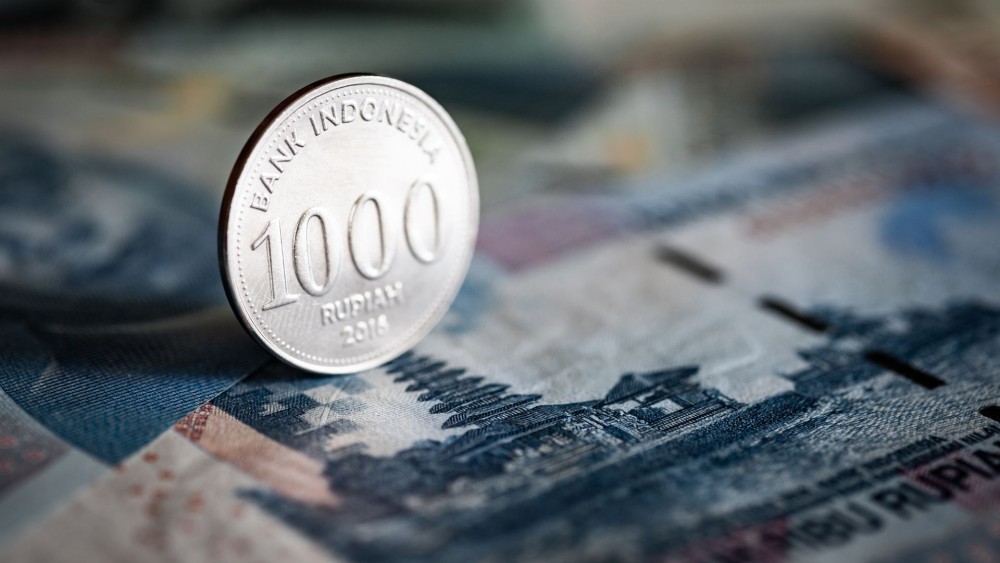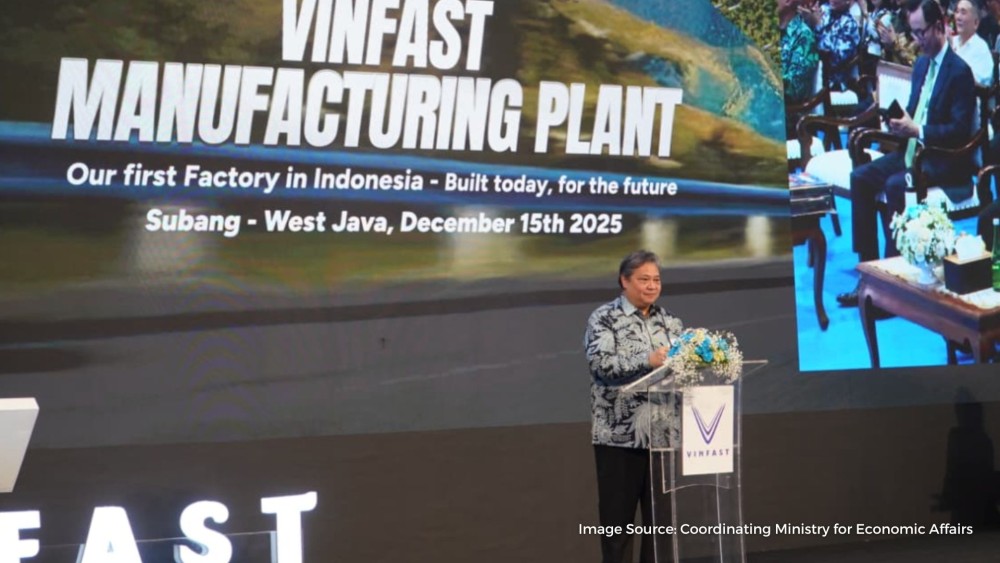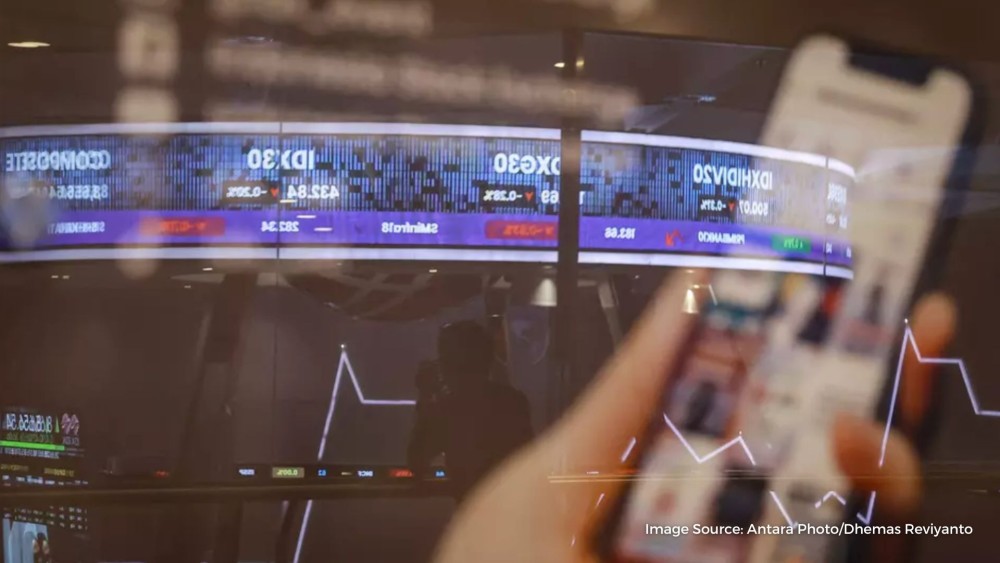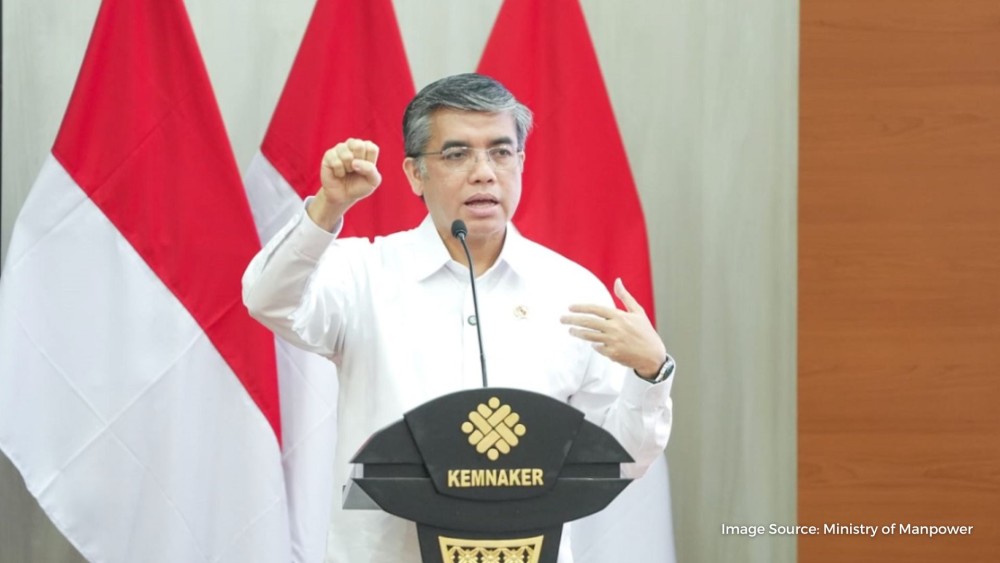This Week's Headlines (Apr. 19-25, 2025)
25 Apr 2025

Indonesia Expects Steady 5% Growth in 2025 Amid Ongoing Trade Tensions
Indonesia's economic growth this year will likely stay around 5% despite trade tensions, its finance minister said on Thursday, stressing a government delegation was still negotiating terms with Washington to try to avoid high tariffs.
The minister's outlook is roughly the same growth pace as last year's 5.03%. The government's target is 5.2% this year and President Prabowo Subianto has pledged to lift growth to 8% by 2029.
In its latest world economic outlook, the IMF downgraded Indonesia's economic growth estimate for 2025 to 4.7% from 5.1%.
Sri Mulyani Indrawati's remarks came at an online press conference of Indonesia's stability board, which consists of its finance minister, central bank governor, head of financial services authority and head of deposit insurance corporation.
The minister and Bank Indonesia Governor Perry Warjiyo were in Washington to attend IMF-World Bank meetings.
A delegation led by chief economic minister Airlangga Hartarto was also in the U.S. capital trying to conclude trade talks within 60 days since its April 17 meetings with U.S. officials including the U.S. Trade Representative.
In those meetings, Indonesia has offered to buy more American products, such as liquefied petroleum gas and wheat, as well as cut its own non-tariff barriers so that the United States would not apply a 32% tariff on Indonesia's exports, which include electronics, apparel and footwear.
"The government will actively conduct early mitigation, including communicating with the U.S. government and, as instructed by the president, will continue deregulation efforts to reduce trade barriers," Sri Mulyani said.
"Efforts will also continue to protect domestic demand," she added.
Indonesia's financial markets have been hit by capital outflows since President Donald Trump's announcement of hefty tariffs in early April. Sri Mulyani said the rupiah's movements against the U.S. dollar are expected to be stable.
In a separate statement, Minister Airlangga said his team has officially begun technical negotiations with U.S. counterparts for a framework agreement on tariffs and would soon discuss topics like market access and national tariff estimates.
"The USTR has stressed the importance of a final package for President Trump's consideration as the final decision maker," the Indonesian economic ministry said.
Sri Mulyani said she is scheduled to meet with U.S. Treasury Secretary Scott Bessent later this week.
She had met with Chinese finance minister Lan Foan on the sidelines of the IMF-World Bank meetings, during which they agreed to strengthen ties, Sri Mulyani said.
Sri Mulyani has previously estimated that if the United States keeps its planned 32% tariff for Indonesia, it could reduce growth potential by 0.3 to 0.5 percentage points.
Indonesia's exports to the U.S. account for just about 2% of its gross domestic product, the government has said, but fallout from the trade war could hurt its economy more.
During their trip, Indonesian ministers also met with U.S. business people to discuss tariffs, including executives of mining giant Freeport McMoRan and the US-ASEAN Business Council's chief executive, Ted Osius, according to the ministers' social media posts.
Source: Reuters
BI Holds Benchmark Rate at 5.75%, Cuts Global Growth Forecast to 2.9%
Bank Indonesia (BI) has decided to maintain its benchmark interest rate at 5.75%, along with the Deposit Facility rate at 5% and the Lending Facility rate at 6.5%, following the central bank’s Board of Governors Meeting held on Tuesday to Wednesday.
Governor Perry Warjiyo said the decision was in line with the central bank's efforts to keep inflation within the target range of 2.5±1% through 2025–2026, preserve rupiah stability amid mounting global uncertainty, and support sustainable economic growth.
“Looking ahead, BI continues to monitor room for further rate cuts by considering rupiah stability, inflation prospects, and the need to boost economic growth,” Perry said during a virtual press conference on Wednesday.
Perry added that BI would continue to optimize macroprudential and payment system policies to support economic momentum. The Macroprudential Liquidity Incentive Policy, which was strengthened on April 1, aims to encourage bank credit in priority sectors aligned with the government’s development programs.
To support small businesses and trade, BI is also expanding its digital payment infrastructure and improving the structure of Indonesia’s payment system industry.
“BI’s monetary, macroprudential, and payment system policy mix will remain geared toward stability and stronger, sustainable growth,” he said.
At the same time, BI revised down its 2025 global growth forecast from 3.2% to 2.9%, due to heightened uncertainty driven by the United States' reciprocal tariff policy announced earlier in April. The move triggered retaliatory measures from China and could prompt similar action from other nations, worsening global trade fragmentation.
Perry warned that the US-China tariff war is set to drag down global growth, with the sharpest declines expected in both countries. Growth in other advanced and emerging economies is also likely to slow, due to declining exports and reduced trade volumes.
Indonesia’s 2025 GDP growth is now projected to fall slightly below the midpoint of BI’s 4.7%–5.5% target, due to both direct and indirect impacts of declining export demand, particularly from the US and China.
Meanwhile, the International Monetary Fund (IMF) on Tuesday slashed the global economic outlook to just 2.8% this year, down from its forecast in January of 3.3%. Global growth in 2026 was revised to 3%, below its previous 3.3% estimate.
To cushion these risks, Perry said BI would strengthen its policy mix, coordinate closely with government fiscal measures, and accelerate the digitalization of Indonesia’s financial ecosystem.
Source: Jakarta Globe
RI Trade Surplus Rises As Exports to US Spike Before Tariffs Kick In
Indonesia booked a large trade surplus in March thanks to surging exports to the United States before import tariffs introduced by US President Donald Trump took effect.
Data unveiled by Statistics Indonesia (BPS) in a press conference on Monday showed that last month’s trade balance, or total exports minus imports, amounted to a USD 4.33 billion surplus, higher than the USD 3.1 billion surplus recorded in the preceding month.
March marked Indonesia’s “59th consecutive month” of trade surplus in a rally that began in May 2020, BPS head Amalia Adininggar Widyasanti explained, adding that bilateral trade with the US contributed most to positive net exports last month.
At USD 1.98 billion, Indonesia’s non-oil and gas trade surplus with the US in March was the highest logged in bilateral trade with the world’s largest economy since the USD 2 billion surplus in March 2022.
Shipments of electrical machinery and equipment alongside footwear and crude palm oil (CPO) were the commodities that contributed the most to the surplus with the US, Amalia said.
The BPS head disclosed that the US, the world’s largest consumer market, was Indonesia’s largest export destination for numerous goods. For instance, it absorbed 63% of certain apparel and accessories throughout this year’s first three months, while Japan, the next largest market, only bought 5.41% of the same goods.
Similarly, 34% of Indonesian footwear exports went to the US, while the next largest market was responsible for less than 10%.
Indonesia racks up surpluses in trade with US, deficits with China
On the opposite end, China once again accounted for Indonesia’s largest bilateral trade deficit last month, as imports exceeded exports by USD 1.1 billion.
That was comparatively low when compared to deficits of USD 1.77 billion and USD 1.75 billion in January and February, respectively, with the world’s second-largest economy.
March’s USD 4.33 billion national trade surplus exceeded most economists’ forecasts and in its extent was out of character, as domestic demand normally increases during the Ramadan and Idul Fitri holidays, driving up imports.
Imports did grow 5.34% year-on-year (yoy) in March, exceeding export growth of 3.16% yoy. However, the import growth was slower than the 6.6% forecast made by Fithra Faisal Hastiadi, an economist with SSI Research.
“The lower-than-expected import growth during Ramadan reflects sluggish domestic demand, indicating that pressure on household spending remains evident,” Fithra wrote in an analysis on Monday.
He went on to say that exports proved relatively resilient in March amid ongoing global economic uncertainties, including escalating trade tensions and weakening demand in many countries.
Bank Danamon economist Hosianna Evalita Situmorang wrote in an analysis on Monday that exporters had “accelerated shipments ahead of Trump’s” tariffs set for April.
She pointed out that freight bookings at China’ ports had plunged by 640,000 to 800,000 containers, reflecting “early spillover from trade tensions [that gained momentum] in March and blew up in April”.
Hosianna wrote that Indonesia’s outlook remains resilient but needs to be watched carefully as Jakarta is planning to increase imports from the US by USD 1.5 billion to USD 2 billion per month to placate Washington in tariff negotiations.
However, “risks persist from higher US tariffs” on palm oil, as well as from coal prices sliding because of weakening global demand prompted by the trade war, the economist said.
She said Bank Indonesia’s accommodative stance and efforts to diversify export markets with a greater focus on ASEAN, India and Europe “should buffer external pressure”.
Bank Permata chief economist Josua Pardede told The Jakarta Post on Monday that the “preliminary assumption” might be to attribute Indonesia’s rising exports last month to exporters trying to ship out more goods before US tariffs kick in.
“However, that is yet to be verified, since there was a seasonal factor [at play as well,] with the post-Chinese New Year [period falling] in March,” Josua said.
He pointed out that March’s exports had been bolstered largely by iron and steel, a key export category for Indonesia, where shipments rose in both volumes and prices, presumably driven by Chinese industries stocking up on raw materials.
Exports of iron and steel grew almost 20 percent in the month of March and were up 12% yoy. CPO shipments also grew by 41% yoy, but coal exports plunged 23.14% yoy.
Indonesia’s trade surplus for the first quarter was USD 10.9 billion, far higher than the USD 7.41 billion in last year’s first quarter.
Source: The Jakarta Post






